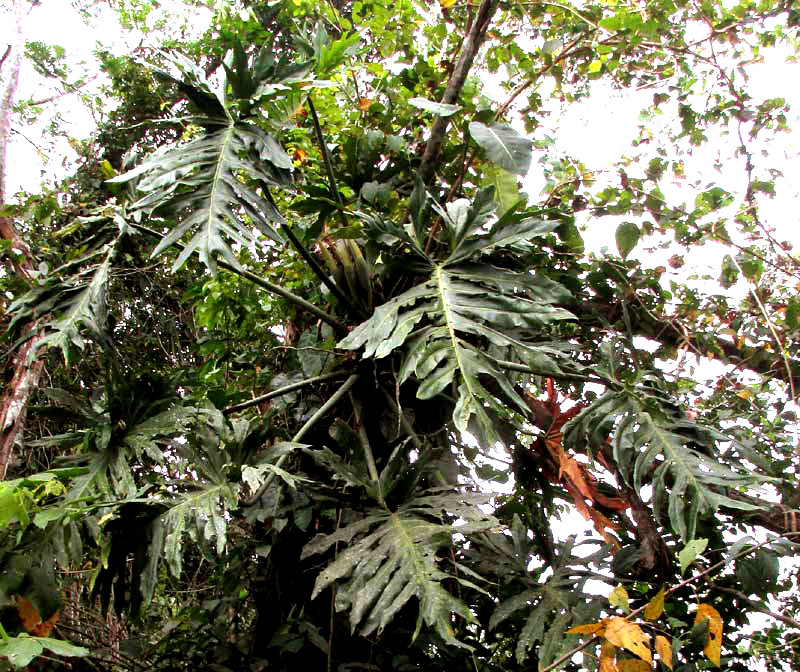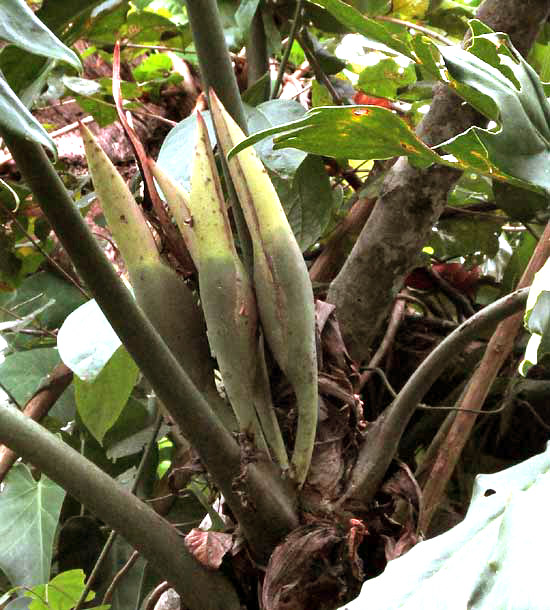Excerpts from Jim Conrad's
Naturalist Newsletter
from theApril 24, 2016 Newsletter with notes from a visit to Lacanja Chansayab in the Lacandon Reserve; elevation 200m (650ft), N16.604°, W90.917°; Chiapas, MÉXICO
SPLIT-LEAF PHILODENDRON
A viny, high-climbing member of the Arum or Jack-in-the-pulpit Family, the Araceae, commonly seen in Chiapas's Lacandon Reserve is the one shown below.

Note that the leaves are deeply divided, not filled with holes like the Monstera, or divided into distinct leaflets like the Syngonium, both of those species commonly occurring in the area. If you look closely a little above the picture's center you'll see a cluster of fruiting structures, or "fruiting spadices," shown close-up below:

This is PHILODENDRON RADIATUM, in English sometimes known as the Split-leaf Philodendron. Split-leaf Philodendrons typically begin their lives as wholly epiphytic plants -- living on tree limbs. The young plants send long roots downward that branch profusely as they approach the ground, and then enter the soil. Water and nutrients from the soil only provide part of the plant's food, however, since much of its nutrition comes from decaying organic material collected on tree branches and trunks.
The species is distributed from southern Mexico south throughout Central America into northern South America. I haven't seen it in the forests around Hacienda Chichen in north-central Yucatan, probably because it's so arid there, but it's grown as an ornamental vine on the Hacienda's grounds. We've had a close look at the leaf shape and flower structure on those ornamental vines at www.backyardnature.net/yucatan/philo-bi.htm